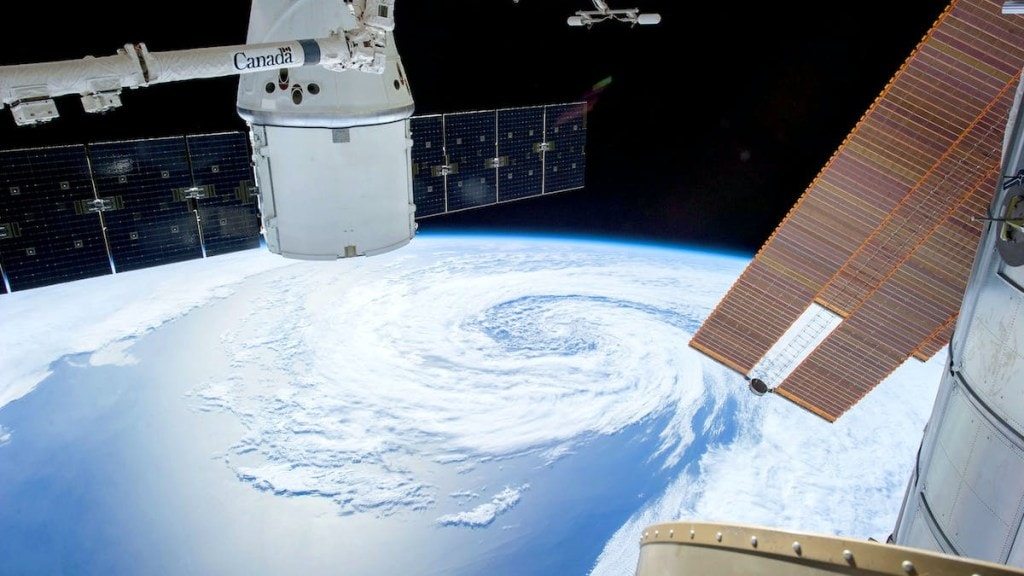By Group Captain Praveer Purohit (retd)
On the morning of Sunday, 02 June, China’s Chang’e 6 lunar explorer, launched a month earlier, touched down on the moon’s far side. Its mission – to collect rock and soil samples to study differences between the near and far sides of the moon. On 04 June, it successfully commenced its return to Earth carrying samples of the moon’s rocks. In 2020, its predecessor, the Chang’e 5, brought back a sample of lunar rocks and soil from the near end of the moon. The successful landing of Chang’e 6 marks another milestone in China’s space programme. Change’ 6 also carried four international payloads, one of which was a satellite named ICUBE-Q, jointly developed by the Pakistan Institute of Space Technology and the Shanghai Jiao Tong University. The ICUBE-Q marks the fruition of the initial Sino-Pak lunar exploration cooperation. Pakistan has already requested China’s cooperation on the Chang’e 8 mission.
The Chang’e lunar explorers are named after a goddess the Chinese believe flew from Earth to the moon. China’s lunar exploration started with Chang’e 1 in October 2007 and followed up with Chang’e 2 three years later. Chang’e 3, launched in December 2013, landed a rover (Yutu) on the moon, making China the third country to achieve this feat. In January 2019, China created history when its Chang’e 4 spacecraft became the first to land a probe on the moon’s far side.
China’s space ambitions have never been a secret. Initially, China benefited considerably from U.S. technology and collaboration. The First Persian Gulf War of 1991 brought important lessons on the applications of space technology and space-based systems. Quick to discern the utility of space for military uses, China realised it was generations behind the U.S. in space and, hence, embarked upon a focused programme to develop its capabilities. One of the key constituents of its space programme was lunar exploration to establish a lunar station. The Chang’e series is the pathway to fulfilling this aim.
Like the oceans and seas, space is also called a ‘global common.’ Of late, space has become a geopolitical flashpoint and an arena for great power competition. China’s anti-satellite missile test in 2007 was a worrisome development that disturbed the modicum of stability and cooperation in space. It galvanised India into including a military element in its hitherto civilian space programme. Fuelled by their shared hatred of the U.S., the Sino-Russia space partnership gained traction in 2014 when they began integrating their Beidou and GLONASS satellite systems. This process was completed in 2019 when a jointly developed multi-frequency radio frequency chip was released to support both constellations. This was seen as a direct threat to the U.S.-developed GPS and the European Galileo systems. In March 2021, a Memorandum of Understanding (MoU) was signed between the two governments to construct an International Lunar Research Station (ILRS) on the moon. On 05 March this year, a Sino-Russian plan to build an automated nuclear power plant on the moon between 2033 and 2035 was revealed by the head of The Roscosmos State Corporation for Space Activities (Roscosmos), Russia’s equivalent of our ISRO.
Intensifying efforts at garnering more international partners in its space endeavours, a document titled “China’s Space Program: A 2021 Perspective” enunciates China’s efforts at expanding bilateral and multilateral cooperation in the 2021-2026 period. It identifies governance of outer space, manned space missions, space exploration, space technology, space applications, and academic exchanges among some of the key areas. Besides pushing the Beidou navigation system as an alternative to the GPS, China has pitched for Chinese solutions and wisdom in monitoring and handling near-earth objects and space traffic management.
China’s space ambitions, combining soft and hard power, are part of its strategy for global dominance. A rapid build-up of offensive capabilities is complemented by the ‘soft’ approach that propounds the need for multipolarity in space. The BRICS Remote Sensing Satellite Constellation is an example of this. Simultaneously, by forging close space ties with African and Latin American countries, it seeks to gain their support in establishing space governance norms favouring itself. Beijing uses economic inducements and enticements to access ground stations and infrastructure worldwide to support its increasing assemblage of satellites. As the space race heats amidst a geopolitically fractured world, China’s space ambitions are not just tailored against the U.S. and the West but also against India, Japan, Australia and South Korea. China will undoubtedly undermine India’s quest to become a space power. Matching China’s massive space budget and technological prowess singularly is an onerous task for India. Collaborating with like-minded nations offers immense benefits even as we augment our space-faring ability. The wise decision to join the Artemis Accord opens many vistas of opportunity to leapfrog our technology and space economy and establish space governance norms that benefit us. The nascent Indian Space Policy requires enhanced funding and an actionable, time-bound plan to create skilled human resources in space education, including its science, technology, and applications. A more balanced civil-military element is called for by enhancing the military’s participation and involvement. The creation of a Space Command should be high on the agenda. The success of Chang’e 6 is another manifestation of China’s ambition towards space dominance by ‘colonising’ the Moon. Its claim of using space for ‘peaceful purposes’ is a chimera. India’s upcoming space launches, including Gaganyaan, offer promise. International collaborations such as the Artemis Accord and Quad that feature India are worthy constituents of our toolkit to create adequate ‘space’ for our interests in space.
The author is a former IAF officer who analyses defence, strategic and geopolitical issues.
Disclaimer: Views expressed are personal and do not reflect the official position or policy of FinancialExpress.com Reproducing this content without permission is prohibited.
